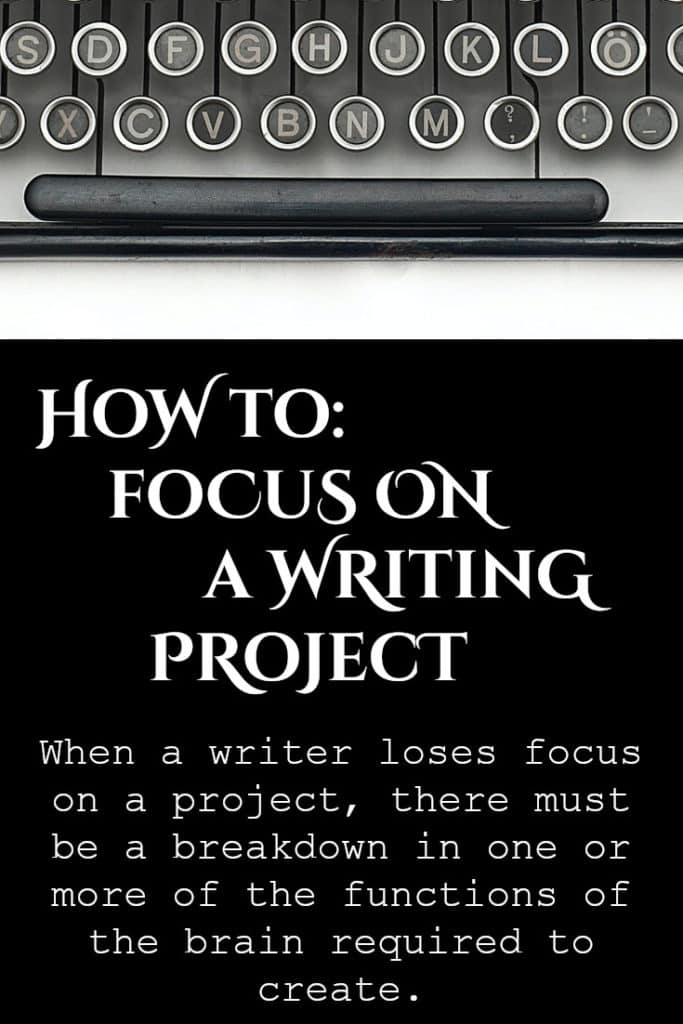How To: Focus on a Writing Project
There have been, at different times in my life, three or four or even five different novel ideas competing for attention–all out of focus. In March 2006, I tried to analyze how to deal with this mess. The following is a post I made on my original blog (with some tense changes here and there).
Multitasking the Dinner Plate
Allow me to present you with this poor analogy: pretend you’re sitting at the dinner table with prime rib in front of you. You’re offered a bowl of Skittles and bottle of [choose your favorite beverage]. While the meat is good, you’re tempted to let the other two objects dance with your taste buds just as much. They may or may not compliment each other, but you know that each one has a unique flavor which demands attention, not haphazard scarfing or slurping. After all, you might love Skittles, but you’re not going to mix a handful of them with a bite of cow.
As a child, I ate my food in a specified order (usually clockwise). Peas never made contact with rice, steak sauce didn’t touch mashed potatoes and the last thing on my plate was the flavor I wanted to keep in my mouth the longest. As I grew older, I abandoned this approach and learned to combine the flavors of different foods on my plate by multitasking.
Sometimes this was done intentionally; sometimes I was just stuffing my face full of whatever I could like a vacuum cleaner.
However, I still have my priorities: the main course is generally consumed in multiple mastication sessions, while complimentary dishes are taken care of in one or two. This is how I eat, and I find it balanced.
However, my writing life has bounced between two extremes: multitasking to the point of never completing anything, and working on one thing only for months at a time. The former extreme is just plain bad for business and the latter results in a loss of focus.
When a bunch of novel ideas compete with each other in my head, I wonder if my approach should not lean more toward a balanced combination of multitasking with more emphasis placed on the project I feel the most connected to at the time.
It’s all about focus.
Fixing the Focus Issue
There are exercises to combat loss of focus, but most of them are related to some aspect of project management in the business world. They are not easily transferred to the uninhibited creative mind; in other words, the right side of the brain cannot form strategies (i.e., the path to completion of a “real” project), or break down a project into component tasks. Our right side is often exercised in areas that are contrary to compartmentalizing our creative efforts.
It does, however, explore possibilities. Within these possibilities, strategies can be analyzed and eventually goals can be achieved.
If we subscribe to the notion that novels are projects and writing them is a career path, then managing the creation of these novels should be no more difficult than managing a software development project or a large defense contract. I’m not saying we apply Critical Path Analyses or Gantt Charts to them, but there are tools that might effectively guide projects to completion without losing focus.
To do this, though, we have to assign “novel writing” to the left side (or logical portion) of the brain and infuse creativity into what can now be called a managed project.
I’ll back up for a moment. I used to be a meteorologist and often used a managed process and creativity to analyze the state of the atmosphere at a given time to forecast what the state will be in hours, days or weeks. I was also, for about three years, a project manager and interface designer of prototype climatological Internet applications for the Department of Defense. Software developers who might be reading this are usually guided by requirements documents and shudder at the idea of “creativity.” As a meteorologist who developed software, though, I had a unique point of view while managing these projects at work: I could insert creativity into the regimented software development process without fear of reprisal. Things got done, and there was much rejoicing in the land (my head, my imaginary land).
If I were to turn that around–attempt to apply a managed process to what I feel should be a strict creative expression–I would ultimately lose focus and feel my creativity stunted by a logical progression of requirements documents. Timelines would be missed, and although a project might see fruition, it would not do so in an ordered fashion.
The end result would be a pretty-looking piece of crap.
So if the first approach to managing projects at work was successful, I wondered: why can’t I apply this principle to writing novels? Why can’t I insert creativity into a managed task rather than trying to manage a creative task?
The answer is: I already do it, and so do you.
Yes, the right side of our brain cannot accept guidelines; that’s the hemisphere that, when presented with the order “Stay within the lines,” will translate it into “What would my picture look like if I melted this burnt sienna crayon on the paper and used a tongue depressor to push it around?”
And yet we use our left side to force our creative expressions into linear patterns: to use words, to see order (exposition, conflict, rising action, climax, denouement) and to understand grammatical rules that we adhere to religiously.
Combining the two hemispheres allows us to ultimately create something that is accessible to others.
Writing is a managed process infused with creativity. It is not creativity managed.
The Man With Two Brains
When a writer loses focus on a project, there must be a breakdown in one or more of the functions of the brain required to create. I argue that creativity is not lost here: rather, it’s writhing around in pain in the right hemisphere, unable to cross the corpus collosum–the bundle of nerves that connect the two sides of the brain–and guide the logical process of the left hemisphere.
A writer’s focus becomes blurry at this point. He or she attempts to force creativity through the left side or tries to push some managed process through the right. The writer wants to believe that their work is a strict creative expression. Headaches ensue and projects suffer.
Roger Sperry, a Nobel Prize winner, conducted a study regarding the vast differences in the way the two hemispheres of the brain react to the world around a person. These “split brain” experiments laid out, in so many terms, what each hemisphere is capable of doing. More importantly, he characterized the need for synchronicity between the two hemispheres in the creative process:
Communication between the two hemispheres of the brain is essential if our creative efforts are to be well integrated in many dimensions . . . Indeed, when the halves of the brain exchange their disparate experiences, pool their viewpoints and approaches, the resulting synthesis brings . . . a whole symphony of talents. (Sperry, R. W., (1975, August). Left-brain, right-brain. Saturday Review, pp. 30-33.)
With all that said, I offer myself this analysis: in order to focus on a project, we must break it down into its component parts, assign a logical progression of plot, and finally allow our creativity to guide the words that come from our left hemisphere.
If we do this–assign novel writing to the logical side of the brain–we can allow the creative brain to explore deeper, imagine more, dream larger.
The stronger the right hemisphere becomes, the more clout it has with the left hemisphere.
In short, we must have two brains, and they must like each other.


















